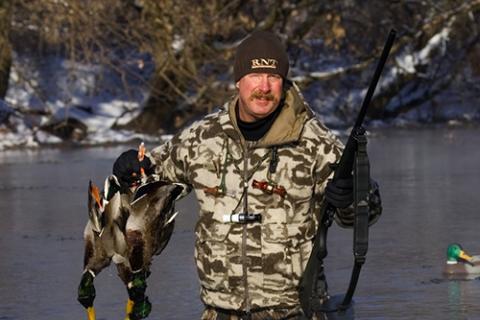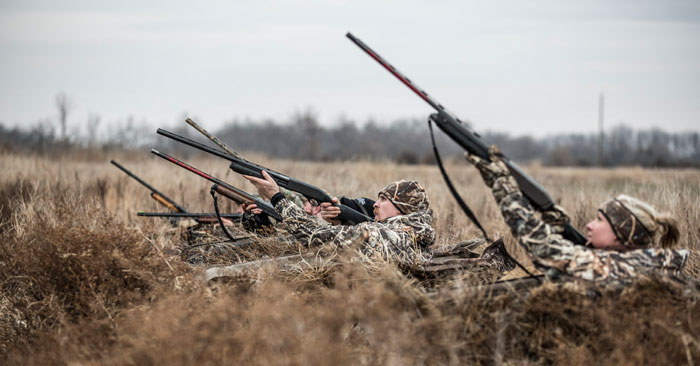
Geese, both Canadas and Snows, are big, tough birds built to take the harshest weather conditions Mother Nature can dish out. To hunt them successfully, you need a shotgun as tough as your quarry.
 While smaller guns, with the correct loads, can take geese down at 20 yards, add a few yards with less than favorable shot angles and a strong wind and the little guns will not fly.
While smaller guns, with the correct loads, can take geese down at 20 yards, add a few yards with less than favorable shot angles and a strong wind and the little guns will not fly.
So what exactly is the right gun for goose hunting? There are several factors to consider.
What to Consider When Looking for a Gun for Goose Hunting
1. Adjustability — Foul-weather goose hunting requires heavy clothing to handle the harsh elements. This means you will need to shorten your stock to handle the gun properly with extra layers of clothing. Adjustability varies by manufacturer, but The Beretta A400 Xtreme offers the best combination of recoil reduction and adjustability.
2. Rustproof Metal — Goose season dishes out the worst of weather. You will want your investment protected. Most manufacturers of goose guns apply coatings to their gun barrels and receivers. Remington uses AmorLokt coating, while Browning uses Dura-Touch Armor coating.
 3. Internal Plating — Moisture is the enemy of every shotgun. Covering internal components with a corrosion-resistant barrier helps prevent rust and extends the life of the shotgun. Remington utilizes the nickel Teflon.
3. Internal Plating — Moisture is the enemy of every shotgun. Covering internal components with a corrosion-resistant barrier helps prevent rust and extends the life of the shotgun. Remington utilizes the nickel Teflon.
4. Slip-Proof Stock — Safety is paramount while goose hunting. Maintaining a good grip on your shotgun is essential. Choose one with a textured coating that offers superb gripping power. Remington and Beretta offer over-molded rubber inserts on the pistol grip and forend, which are perfect for wet, cold conditions.
5. Glove Friendly — Gloves are a given in the goose pits. An over-sized trigger guard and an easy to reach safety on a goose gun are necessary items for safe and functional operation while wearing gloves.
6. Cleaning Ease — Goose guns get wet and muddy and need cleaning after every hunt. Choose guns that break down into only a few pieces, without springs that are very easy to loose.
7. Dependable Action — Modern autoloaders are far ahead of the goose guns found in hunters' hands a generation ago. The inertia-operated Benelli Super Black Eagle is well known for its dependability. Unique gas port systems, which bleeds off more gas for lighter loads, are becoming more standard. Browning offers a 100,000 round guarantee with some models.
What are Good Goose Guns Options?
Settling on that perfect goose gun is like choosing a prom date. There are a lot of choices, but in the end, you have to select the one that suits you best.
Following are some top models to consider. All are highly recommended by experienced goose hunters and guides. Each one can be found at Bass Pro Shops.
Remington Versa Max Sportsman Shotgun

Winchester SX3 Waterfowl Semi-Auto Shotgun

Beretta A400 Xtreme Unico Semi-Auto Shotgun

Benelli Super Black Eagle II Semi-Auto Shotgun

Browning Maxus

Shot Selection Tips
The old adage that bigger shot equals more killing power is not necessarily true anymore. Bigger shot is not always the best answer to killing more geese. Consider the following when choosing your shot size.
- Larger shot means less pellets. Less pellets equates less room for error.
- Small shot will penetrate deeper into geese, because it has less surface area.
- Small shot has less mass and transfers less kinetic energy.
- Selecting the proper shot size is a compromise between shot distance, choke being used and hunting conditions.
- Every shotgun will pattern various loads differently. Pattern your loads on a target with an 18-inch diameter circle in the middle, the approximate size of a goose.
- Reserve the right to change your mind about shot size should a proven size one day fail you in the field.
- 25906 views

